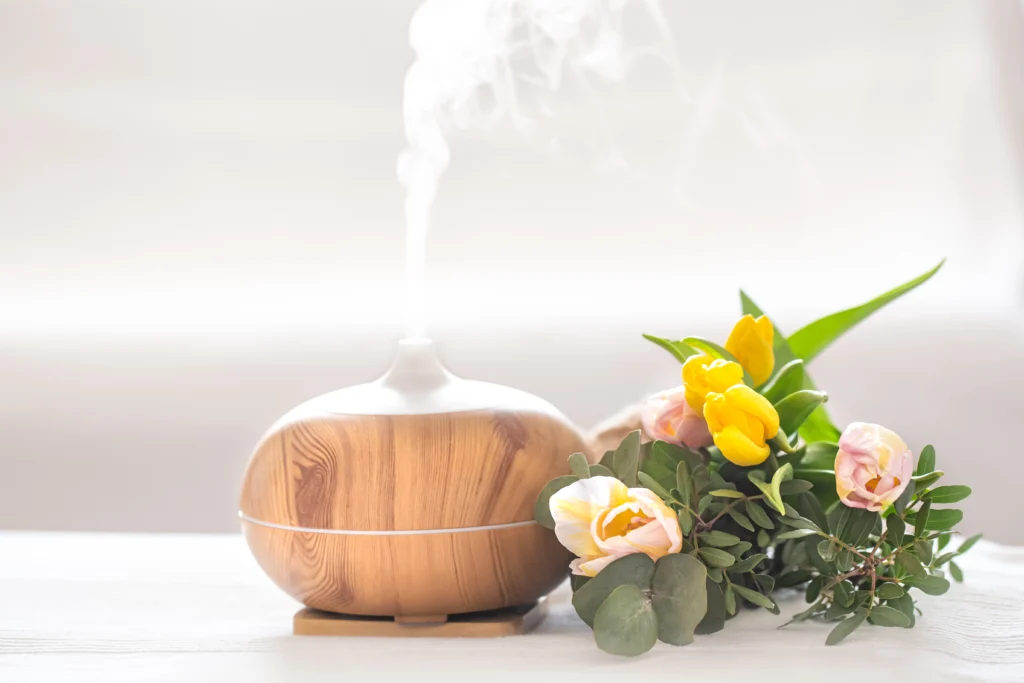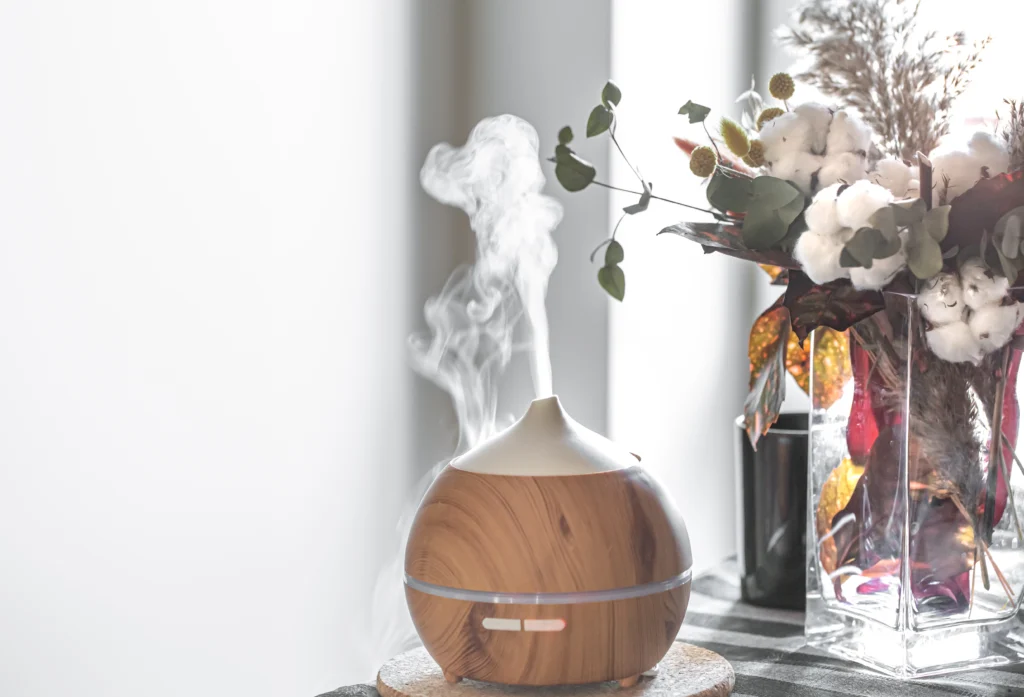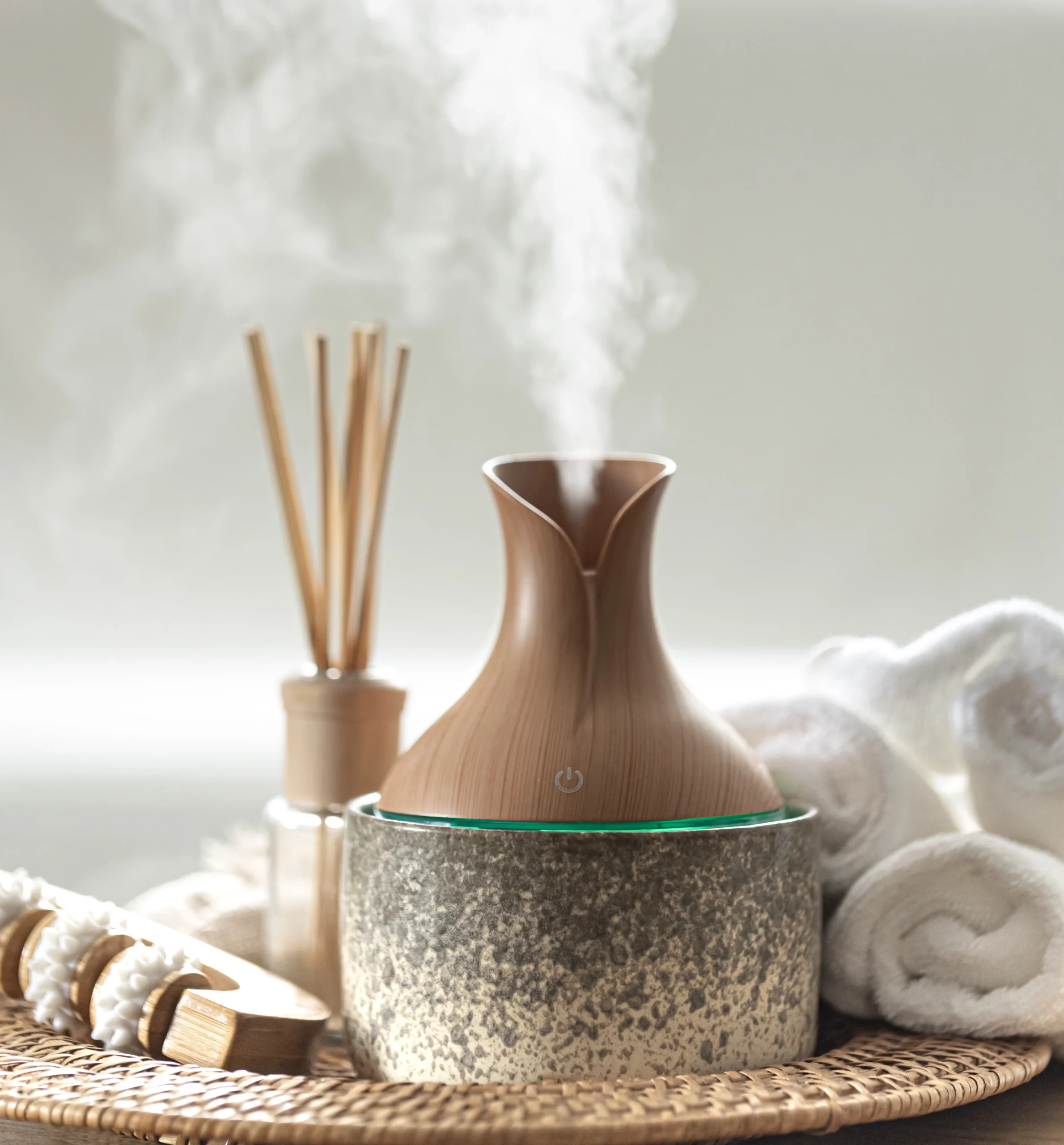Introduction
A clean home is more than shiny floors and organized rooms, it’s also about the air you breathe every day. Indoor air often carries dust, allergens, toxins, and odors that affect your health and comfort. While air purifiers are effective, nature has its own powerful way of freshening up the living spaces.
That’s where nature’s air purifiers like plants, natural materials like (snake plant, lavender, peace lily, aloe-vera, spider plant) and eco-friendly habits works best. These solutions not only improve air quality but also add beauty, calmness, and balance to your home. At Mesh Maids, we believe that a healthy home isn’t just about cleaning surfaces but also about creating an environment that supports your well-being. Adding nature air purifiers to your daily cleaning routine makes your environment healthy.
This guide explores the best natural air purifiers for your home, their benefits, and how to use them effectively to achieve cleaner, fresher air every day.
What Are Nature’s Air Purifiers?

Nature’s air purifiers are simple, natural elements that help clean and refresh the air in your home, without relying on machines or chemical sprays. These include indoor plants, natural materials, and eco-friendly habits that work together to reduce toxins, neutralize odors, and improve overall air quality. Adding a Vicks humidifier to your routine can also support cleaner air by maintaining healthy moisture levels, reducing dryness, and preventing the buildup of dust and irritants in the atmosphere.
Why They Matter
Nature’s air purifiers don’t just clean the air, they also:
- Create a calming, refreshing home atmosphere.
- Reduce reliance on energy-consuming appliances.
- Support a healthier lifestyle for kids, pets, and anyone with allergies or sensitivities.
In short, they’re affordable, eco-friendly, and add beauty and wellness to your space while quietly working to keep your indoor air clean.
Why Indoor Air Quality Matters
Most of us spend nearly 90% of our time indoors. That means the air inside has a direct impact on your energy levels, sleep quality, and even long-term health.
Here are the most common culprits affecting indoor air:
- Household Pollutants: Cleaning products often release VOCs that are harmful to health.
- Allergens: Dust mites, pet dander, and pollen settle on surfaces and circulate in the air.
- Moisture Issues: Humidity that’s too high creates a breeding ground for mold and mildew.
- Daily Activities: Includes cooking, or smoking release particles and gases.
Health Risks of Poor Indoor Air:
- Short-term: Poor indoor air quality may gives you headaches, itchy eyes, coughing, and fatigue.
- Long-term: And if indoor air quality doesn’t improved, it may lead to aggravated asthma, allergies, or respiratory issues.
Nature provides simple, safe, and cost-effective ways to keep your indoor air fresh.
The Power of Nature’s Air Purifiers
Nature’s air purifiers work in harmony with your environment. Unlike machines, they do not consume electricity, require filters, or add noise. Instead, they rely on natural processes—like photosynthesis, moisture absorption, and odor neutralization—to keep your home balanced.
Here are the most effective natural air purifiers you can welcome into your living space.
1. Houseplants: Green Companions for Clean Air
Houseplants are perhaps the most popular and visually appealing natural air purifiers. They absorb carbon dioxide, release oxygen, and filter harmful toxins.
Best Air-Purifying Plants for Your Home
- Snake Plant (Sansevieria) – Hardy and low-maintenance, great for bedrooms.
- Peace Lily – Beautiful flowers plus strong toxin-absorbing properties.
- Spider Plant – Effective against formaldehyde and carbon monoxide.
- Aloe Vera – Purifies air while offering soothing gel for skin.
- Areca Palm – Natural humidifier, perfect for dry spaces.
Placement Tips
- Put a snake plant in the bedroom for nighttime oxygen release.
- Place peace lilies in living rooms to brighten and freshen spaces.
- Keep aloe vera in sunny kitchens or bathrooms.
Mesh Maids Tip: Dust plant leaves regularly to help them breathe better—just like your floors, clean plants make for a healthier home.
2. Activated Charcoal: The Natural Odor Absorber
Activated charcoal is a powerful, toxin-absorbing material. It works by trapping impurities in its porous structure.
Benefits:
- Eliminates odors from kitchens, bathrooms, and closets.
- Absorbs volatile organic compounds (VOCs) from household products.
- Long-lasting and chemical-free.
How to Use:
- Place small bags of activated charcoal in shoe racks, near trash bins, or under sinks.
- Refresh by exposing the bags to sunlight for a few hours once a month.
3. Beeswax Candles: Purifying While Creating Ambiance
Beeswax candles don’t just create a cozy atmosphere, they also improve air quality. When burned, they release negative ions that bind with dust and allergens, making them fall out of the air.
Why Choose Beeswax Over Regular Candles?
- Non-toxic and eco-friendly.
- Longer burning time.
- Mild, natural honey scent without synthetic fragrances.
Place beeswax candles in living rooms or dining areas for both beauty and freshness.
4. Salt Lamps: Nature’s Glow and Cleanse
Himalayan salt lamps are known for their warm, calming light. More than just décor, they help reduce airborne pollutants.
How They Work
- Attract moisture from the air.
- Trap pollutants and release cleaner air back.
- Emit a soothing glow that enhances relaxation.
Best Spots for Salt Lamps
- Bedrooms for restful sleep.
- Home offices for reduced stress.
- Living rooms for ambiance and freshness.
5. Essential Oils and Diffusers
Essential oils not only make your home smell wonderful but also have antibacterial and antiviral properties.
Best Essential Oils for Air Purification
- Eucalyptus – Clears respiratory pathways.
- Lavender – Calming, reduces stress.
- Tea Tree – Strong antibacterial properties.
- Lemon – Fresh, uplifting, and cleansing.
How to Use
- Add a few drops to a diffuser for continuous fresh air.
- Mix with water in a spray bottle to refresh fabrics and furniture.
Mesh Maids Tip: Always choose pure, high-quality oils—avoid synthetic fragrances that add toxins back into the air.
6. Fresh Air and Ventilation
Sometimes, the simplest solutions are the most powerful. Proper ventilation reduces indoor pollutants and keeps air circulating.
Simple Steps
- Open windows daily to let fresh air in.
- Use exhaust fans in kitchens and bathrooms to reduce humidity and odors.
- Create cross-ventilation by opening opposite windows.
7. Natural Cleaning Products
Many commercial cleaning supplies release chemicals that harm indoor air. Switching to natural cleaning products makes a huge difference.
- Use vinegar, baking soda, or castile soap for everyday cleaning.
- Opt for eco-friendly, plant-based cleaning brands.
- Keep fragrances light or fragrance-free.
At Mesh Maids, we know that a clean home means clean air. That’s why we recommend non-toxic cleaning supplies to protect your family.
8. DIY Air-Purifying Hacks
If you enjoy simple home remedies, try these easy DIY ideas:
- Simmer pot: Boil water with lemon slices, cinnamon, or herbs to refresh air naturally.
- Household herbs: Grow basil, rosemary, or mint on your windowsill. They release fresh scents while boosting oxygen.
- Baking soda jars: Place small jars with baking soda in closets or the fridge to absorb unwanted odors.
Best Plants for Different Rooms

Not every plant thrives in the same environment. Light levels, humidity, and air circulation differ from room to room, so choosing the right plant ensures it both survives and purifies your air effectively. Here’s a quick guide:
Bedrooms: Plants for Restful Sleep
- Snake Plant (Sansevieria): Releases oxygen even at night, making it ideal for better sleep quality. It’s also nearly impossible to kill—perfect for beginners.
- Lavender: While not a heavy air purifier, lavender promotes relaxation with its calming scent, helping you unwind before bedtime.
Place a small lavender plant on your nightstand and a snake plant in the corner to create a sleep-friendly air zone.
For Kitchens:
- Aloe Vera: Thrives in bright, sunny kitchens while filtering formaldehyde and benzene. Plus, you can use the gel for minor burns or cuts.
- Herbs (Basil, Mint, Rosemary): Not only do these add freshness to the air, but they also double as cooking companions.
Keep herbs in small pots on the windowsill. They’ll purify the air and make your favorite meals taste fresher.
Bathrooms: Plants that Handle Humidity
- Peace Lily: Loves humidity and actively removes mold spores from the air, making it perfect for bathrooms.
- Bamboo Palm: Adds a spa-like vibe while naturally humidifying and filtering toxins.
Place a peace lily on a bathroom shelf to keep the air fresh and mold under control.
You can try these different natural air purifiers for your home and make your home’s indoor air quality better for your loved ones.
Eco-Friendly Home Design for Better Airflow
The way your home is designed has a huge impact on indoor air quality. By making thoughtful design choices and with natural air purifiers you can naturally improve indoor airflow, reduce pollutants, and create a healthier environment without depending heavily on machines.
1. Strategic Placement of Windows and Skylights
Natural ventilation is one of the simplest yet most powerful tools for clean air.
- Cross Ventilation: Placing windows on opposite walls allows fresh air to flow through the home, pushing stale air out.
- Skylights: These not only brighten your space but also act as natural exhaust points, letting warm, stuffy air escape.
- Trickle Vents: Small openings in modern windows that allow a steady supply of fresh air without losing energy efficiency.
Open multiple windows for 15–20 minutes daily to flush out indoor pollutants—especially after cooking or cleaning.
2. Using Natural Building Materials
Many modern building materials release VOCs (volatile organic compounds) that linger in the air and affect your health. Choosing eco-friendly materials helps create a toxin-free indoor environment.
- Wood and Bamboo: Renewable, low-emission, and add warmth to interiors.
- Clay, Brick, or Stone: Natural, breathable materials that regulate humidity and improve air circulation.
- Low-VOC Paints and Finishes: These significantly cut down on chemical off-gassing in your home.
Bonus: Pairing natural materials with indoor plants enhances air purification while giving your home a clean, organic aesthetic.
How to Build an Air-Purifying Routine
Creating cleaner air at home doesn’t need to feel like a chore, it’s all about having small, consistent habits into your daily life.
Daily
- Let Fresh Air In – Open your windows for at least 15–20 minutes to flush out stale air and bring in oxygen-rich fresh air.
- Wipe Surfaces Naturally – Use a microfiber cloth or a natural cleaner (like vinegar or a baking soda solution) to remove dust and allergens.
- Declutter as You Go – The less clutter, the fewer surfaces dust has to settle on—keeping air cleaner without extra effort.
Weekly
- Vacuum & Mop – Use a vacuum with a HEPA filter and mop floors with eco-friendly solutions to trap dust and allergens.
- Care for Houseplants – Gently wipe plant leaves with a damp cloth so they can keep “breathing” and purifying air effectively.
- Refresh Natural Purifiers – Replace or recharge items like activated charcoal bags or bamboo charcoal air purifiers.
Monthly
- Wash Soft Fabrics – Clean curtains, cushion covers, and bedding in hot water to remove dust mites and allergens.
- Reset Your Natural Tools – Wipe down salt lamps, replace beeswax candles, and ensure essential oil diffusers are clean.
- Deep Clean Support – Schedule a professional deep cleaning to tackle hidden dust in air ducts, carpets, and upholstery.
Pairing natural air-purifying methods with professional deep cleaning a few times a year gives you a healthier, fresher home without feeling like you’re constantly battling dust and odors.
Common Mistakes to Avoid
Natural air purifiers are powerful tools for a healthier home, but like anything, they only work if used correctly. Many people make small mistakes that reduce their effectiveness—or even create new problems. Here’s what to watch out for:
Overcrowding with Too Many Plants
Plants clean air, but filling every corner with them can raise indoor humidity and create conditions for mold.
Keep a balanced number (2–3 medium plants per room is plenty) and choose low-maintenance purifiers like snake plants or peace lilies.
Burning the Wrong Candles
Not all candles are equal. Scented paraffin candles may release harmful chemicals into the air.
Opt for 100% beeswax or soy candles, which naturally clean the air and give off a warm, cozy glow without toxins.
Using Synthetic Essential Oils
Many commercial oils contain artificial fragrances that can release VOCs (volatile organic compounds) instead of purifying.
Stick to pure, therapeutic-grade essential oils and diffuse in moderation for safe air enhancement.
Neglecting Your Air-Purifying Tools
Dusty plants, clogged salt lamps, or dirty diffusers stop working as intended. It’s like expecting a dirty filter to clean your air.
Wipe plant leaves monthly, clean diffusers weekly, and refresh items like activated charcoal bags every few months.
Pro Tip: Natural air purifiers are like any other part of your home, they need a little care always.
When to Call Professionals
Natural air purifiers can go a long way in keeping your home fresh, but they’re not a replacement for a deep professional clean. Sometimes, your air needs more than plants and natural materials. Here are signs when it’s time to call in professional cleaning services like Mesh Maids:
Persistent Dust or Allergies
If you notice dust settling hours after cleaning or family members constantly sneezing, your home might be holding allergens that natural purifiers can’t reach.
Pet- Friendly Homes
If you’re a pet parent, you know pet dander clings to fabrics, rugs, and air ducts. Natural purifiers help, but professional carpet cleaning ensures that allergens don’t build up long term.
At Mesh Maids, we combine eco-friendly cleaning solutions with proven methods to target dust, odors, and allergens, helping your natural purifiers actually work better. Contact us whenever you feel that you need house cleaning for your home.
Conclusion
Clean air is a foundation for a healthy, happy home. By using nature’s air purifiers, you can create an environment that feels fresh, balanced, and welcoming every day. From houseplants and beeswax candles to activated charcoal and proper ventilation, these simple steps make a big difference.
We believe a clean home goes beyond spotless floors, it’s about breathing easy, relaxing deeply, and living well. By combining natural air purifiers with regular, non-toxic cleaning routines, you can transform your home into a sanctuary of comfort and health.
Breathe better. Live cleaner and welcome the beauty of nature’s air purifiers for your home. And don’t forget to book your cleaning schedule with Mesh Maids,
